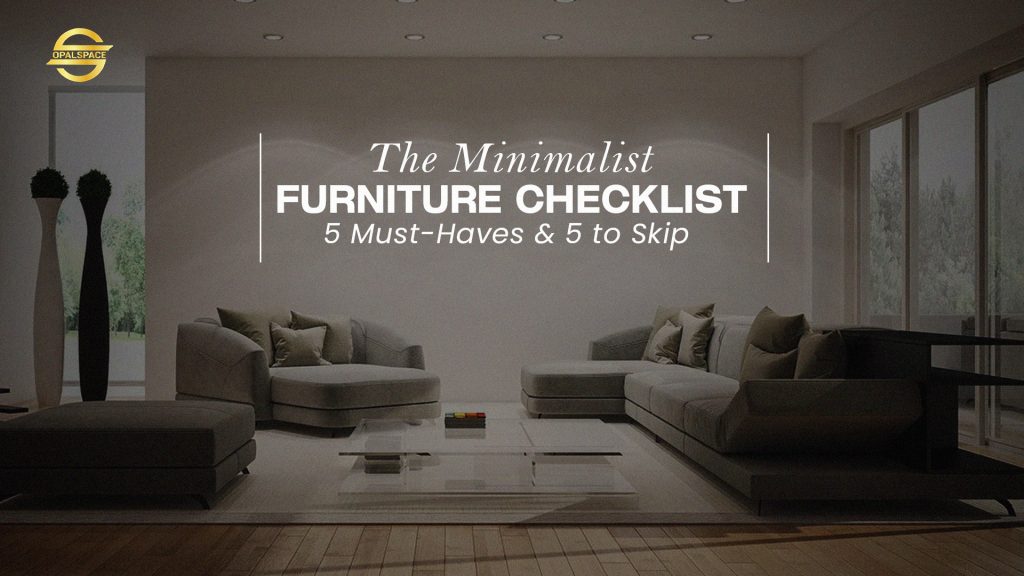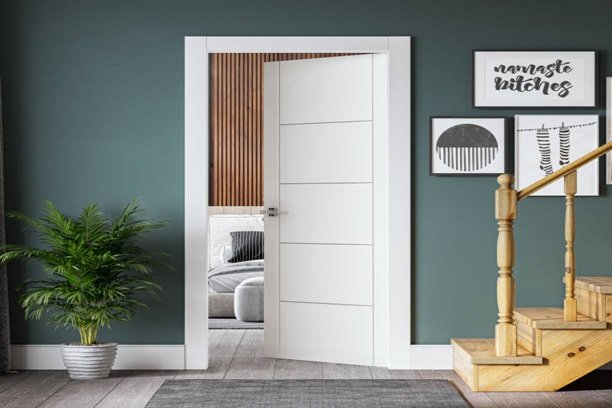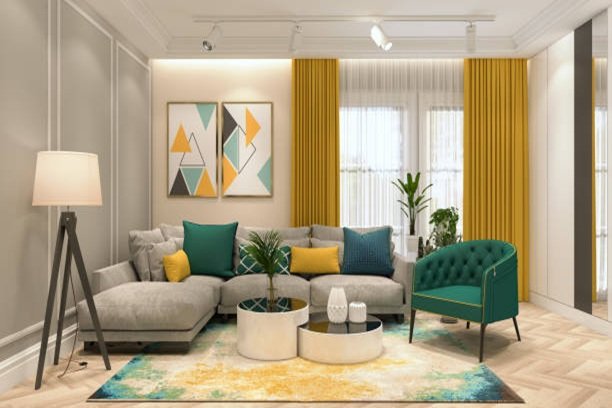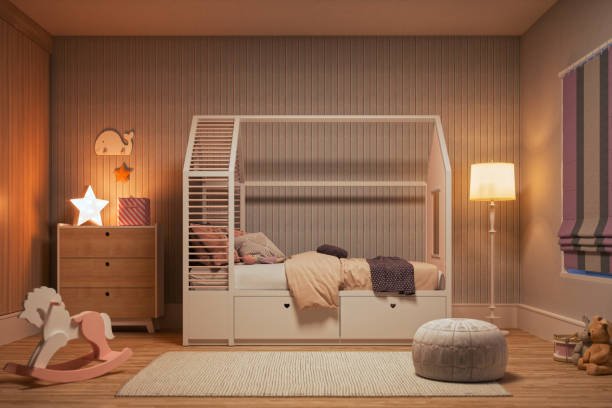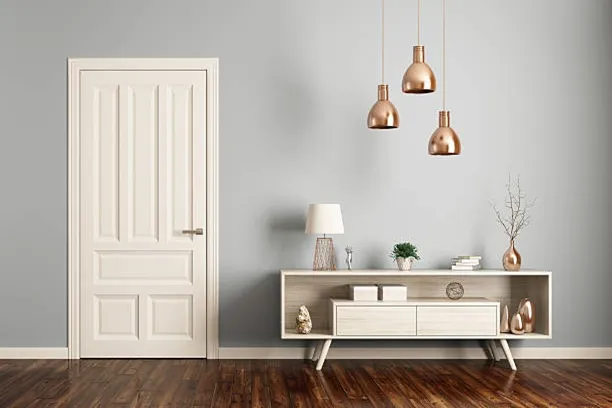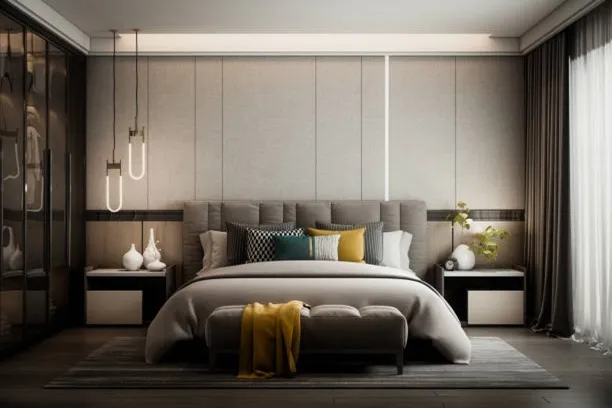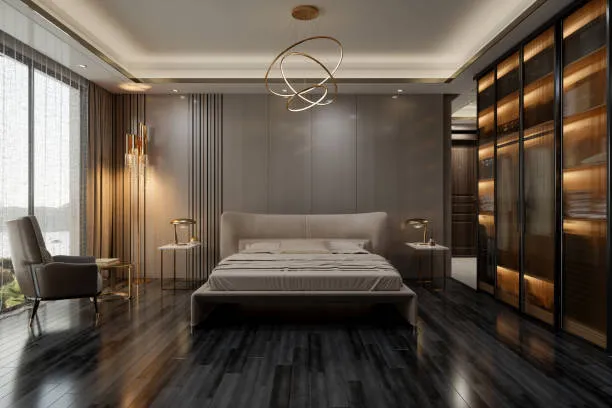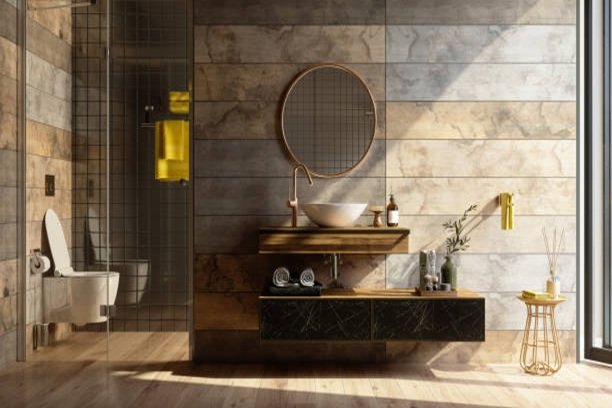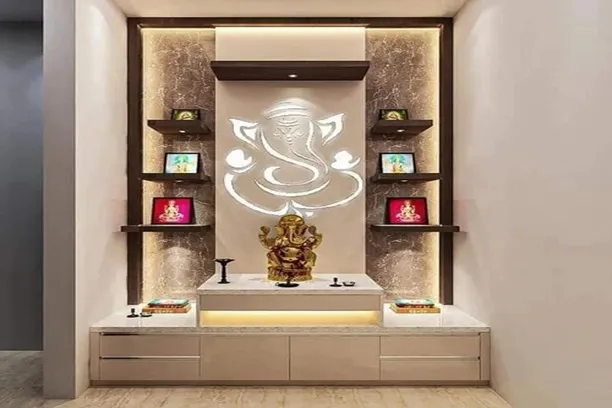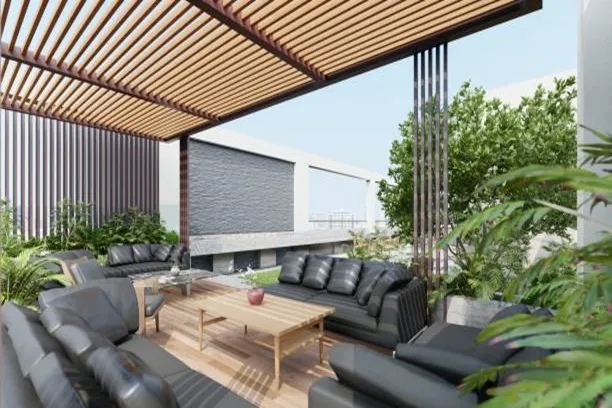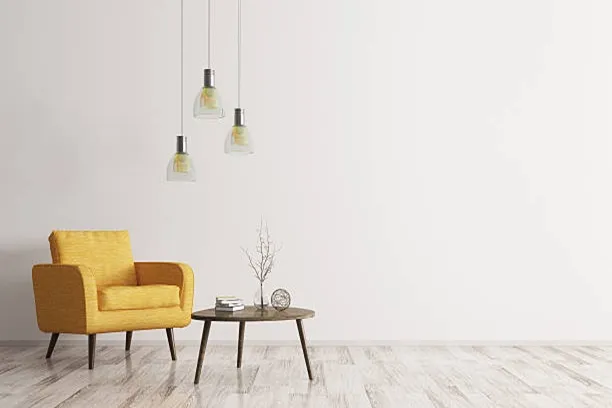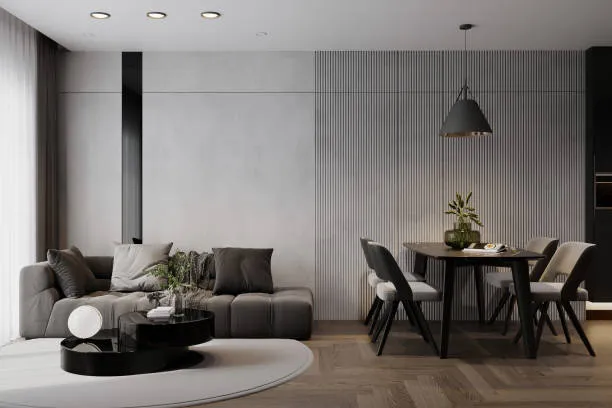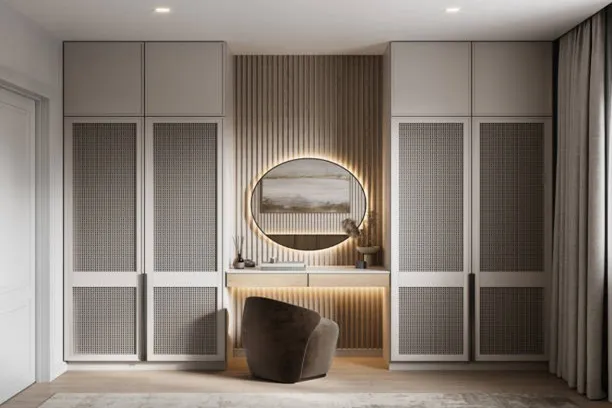Table of Contents
For decades, we have championed a philosophy where the value of a room is measured not by the quantity of its furnishings, but by the quality of its space. The most profound luxury is the purity of restraint, the integrity of materials, and the intelligence of multifunctional design. This approach is not a passing trend but the foundational principle of a timeless interior. It begins with a critical eye and a disciplined hand, starting with the largest elements in your home, your furniture.
This is not a list of mere suggestions. It is a distilled blueprint, a set of proven principles to guide you in selecting the pieces that will architect a life of less clutter and more clarity. Consider this your essential briefing on what to acquire and, just as importantly, what to relinquish.
Core Principles of Choosing Minimalist Furniture Designs
Before the dedicated lists, let us establish the core principles a minimalist should use to evaluate any potential furniture purchase or placement.
- The Multi-Function Test: Does it have versatility? Can it serve more than one purpose?
- The Quality Over Quantity Rule: Is it well-made from durable materials, meant to last for years?
- The Daily Value Mandate: Does it serve a daily or very frequent need? Does its presence improve your life?
- The Scale and Proportion Check: Does it fit the space in a way that it doesn’t crowd it? Does it allow for easy movement?
5 Essential Furniture Pieces for Minimalist Home Interior
1. A High-Quality, Comfortable Sofa
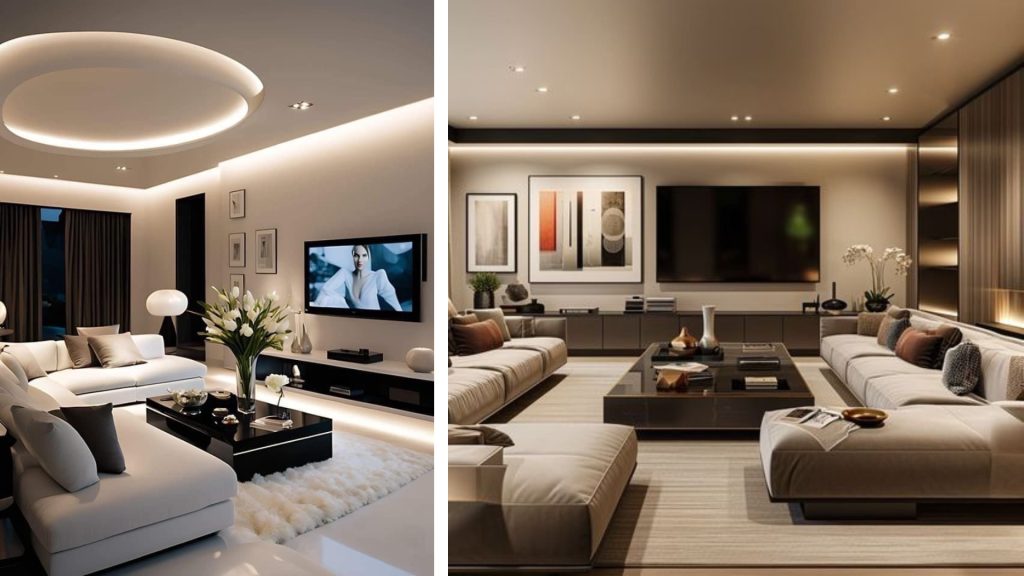
- Structural Integrity: Invest in a solid hardwood frame, preferably with corner-blocked joints for longevity. Avoid softwoods, particleboard, or plastic frames that compromise durability.
- Quality Upholstery: Prioritize performance fabrics designed for resilience, such as high-grade performance velvet, tightly woven wool, or crypton blends. These materials resist staining, fading, and pilling, ensuring the piece remains pristine.
- Considered Comfort: Test the cushion structure in person. Look for a combination of high-density foam cores wrapped in down for a balance of support and plushness that won’t sag prematurely. The seat depth and back height should ergonomically support relaxation.
- External Appeal: Select a design with clean, architectural lines and a neutral colour palette (charcoal, oatmeal, olive, or putty). This takes care of versatility, allowing the sofa to serve as a serene anchor for decades, adaptable to evolving accents and decor.
- Proportional Scale: The sofa’s footprint must complement the room’s dimensions, allowing for clear, unobstructed pathways, typically 30-36 inches of circulation space around all sides.
2. A Functional Dining Solution
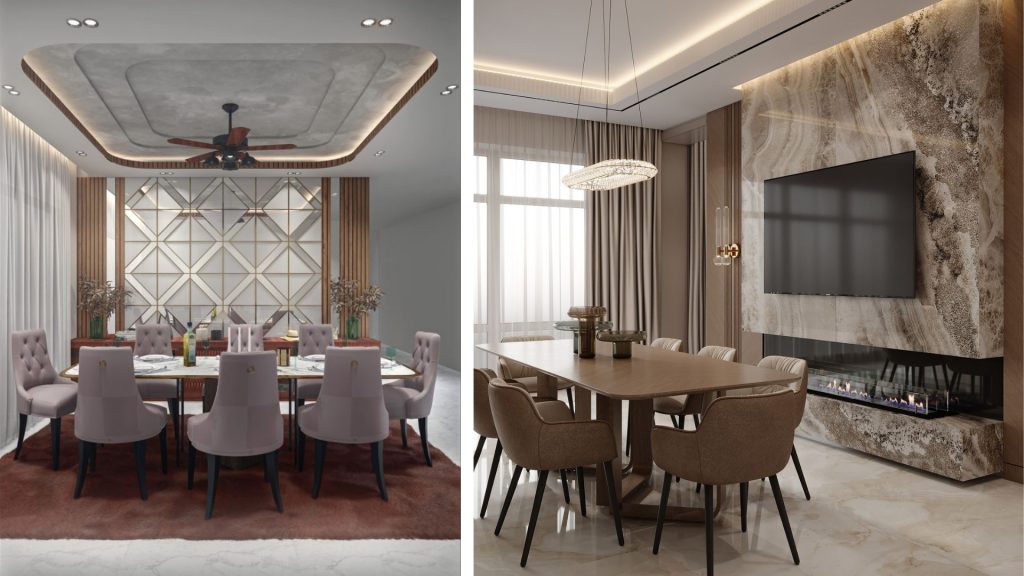
- Honest Functionality: The solution must directly suit your lifestyle. For small households or spaces, a round pedestal table eliminates obstructive legs. For those who enjoy hosting guests or gatherings, a well-engineered extendable table shapes itself beautifully around your needs.
- Material Honesty: You must choose materials that age with grace and have some element in them, like solid wood, honed stone, or sealed concrete. These surfaces make space for drama and withstand daily use.
- Integrated Solutions: In open-plan homes, a substantial kitchen island with thoughtfully chosen counter stools can effectively dual-function as both a prep area and the primary dining spot, eliminating redundancy.
- Cohesive Design: Chairs or stools should be selected for comfort and visual weight that complements, not competes with, the table. You can easily consider a bench for one side to impart a streamlined look and encourage efficient seating.
3. A Supportive Bed Frame
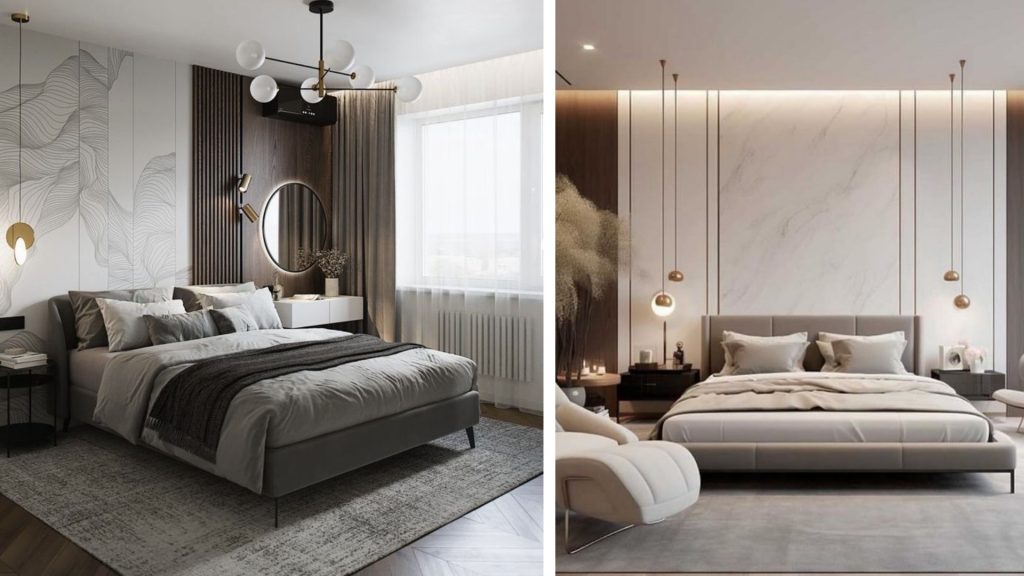
- Simplified Form: A low-profile platform bed is the quintessential minimalist choice. Its integrated slat system negates the need for a box spring and bulky bed skirt, paring the bed down to its most essential and elegant form.
- Integrated Utility: Prioritize designs that incorporate discreet, built-in storage, such as drawers within the platform or a lifted base allowing for bins. This provides a dedicated home for linens or off-season clothing, replacing the need for a dresser or chest.
- Material Substance: Seek out frames crafted from solid wood or metal with a robust finish. Avoid veneers or laminates that can chip or peel over time, disrupting the serene aesthetic.
- Understated Design: Select a headboard with a simple, textural profile (e.g., upholstered in a neutral fabric, or crafted from a single piece of oak) rather than an ornate, space-intruding statement piece.
4. Versatile Storage
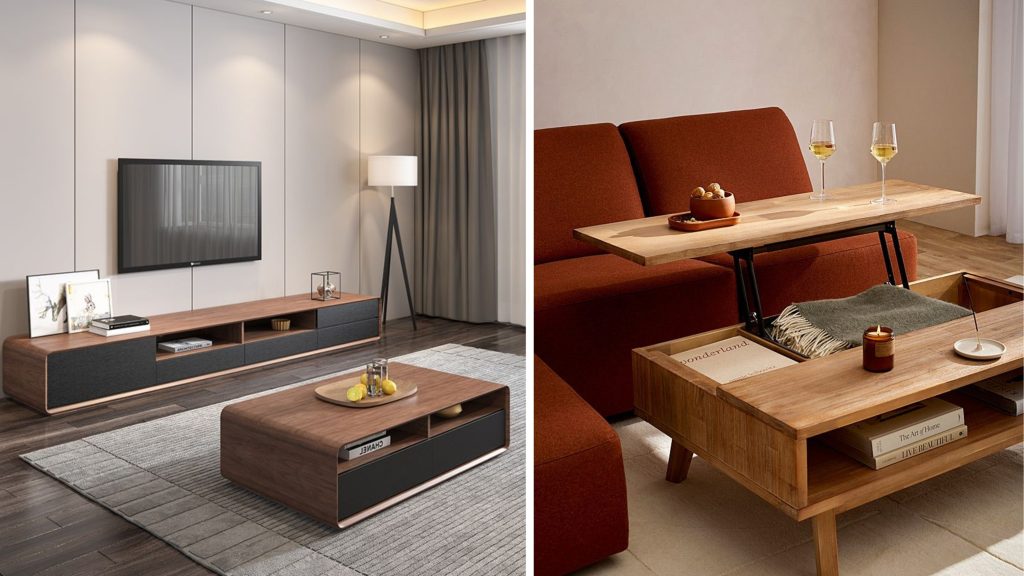
- The Primacy of Closed Storage: Every storage solution should prioritize being enclosed. Media consoles with solid doors, bookshelves integrated with lidded boxes or baskets, and storage ottomans are ideal. This contains the visual “noise” of everyday objects.
- Adaptable Modules: Choose pieces that can be reconfigured or serve multiple roles. A stack of modular cabinets can function as a room divider, a low console, or a media unit. A storage bench can serve as seating, a coffee table, and a container.
- Neutral and Recessive Design: Storage furniture should recede into the background. Opt for designs in muted tones (earthy neutrals, black, white) with simple hardware or push-latch openings. Its job is to disappear, allowing the space and the few displayed objects to shine.
- Scale and Proportion: Storage must be proportional to the wall it occupies and the volume of items it needs to contain. Overly large case goods can make a room feel heavy and cramped, while pieces that are too small appear insignificant and fail to solve the clutter problem.
5. One Flexible Surface
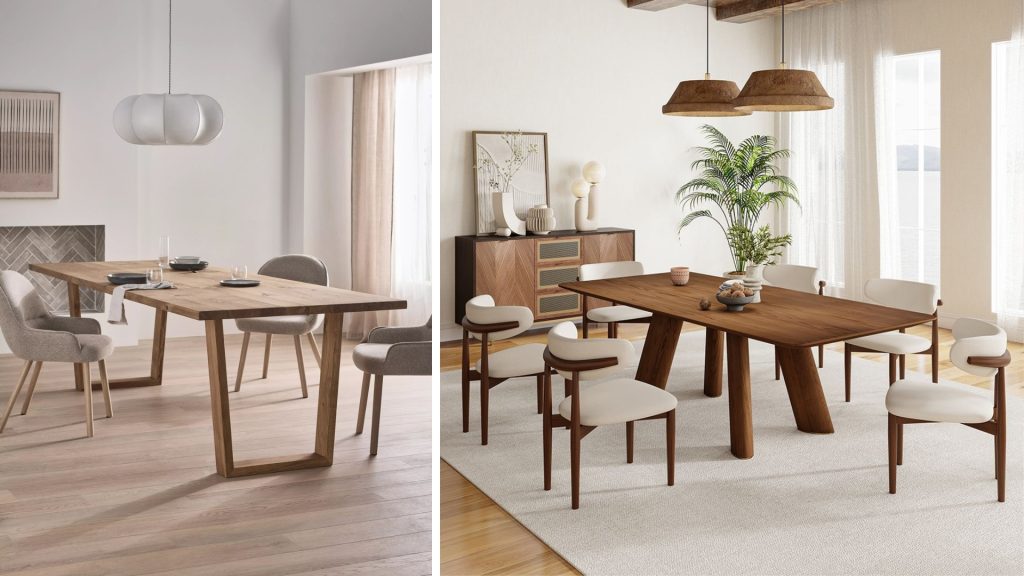
- Strategic Placement: Identify the one spot where a surface is genuinely needed to support a common activity: beside a primary reading chair, behind the sofa for ambient lighting, or in an entryway for keys.
- Lightweight and Agile: The ideal surface feels almost ephemeral. A slender side table on a single stem, a small nesting table set, or a wall-mounted shelf can provide function without visual weight.
- Purpose-Driven Proportion: The surface should be sized precisely for its intended use, just large enough to hold a lamp and a book, for instance. This prevents it from inviting unnecessary clutter.
- Material Consistency: While it can be a moment for material contrast, the piece should feel cohesive with the room’s overall material palette, e.g., a black metal table in a room with other black metal accents, or an oak stool alongside an oak dining table.
5 Minimalist Furniture Mistakes to Avoid At All Costs
1. The Bulky Entertainment Center
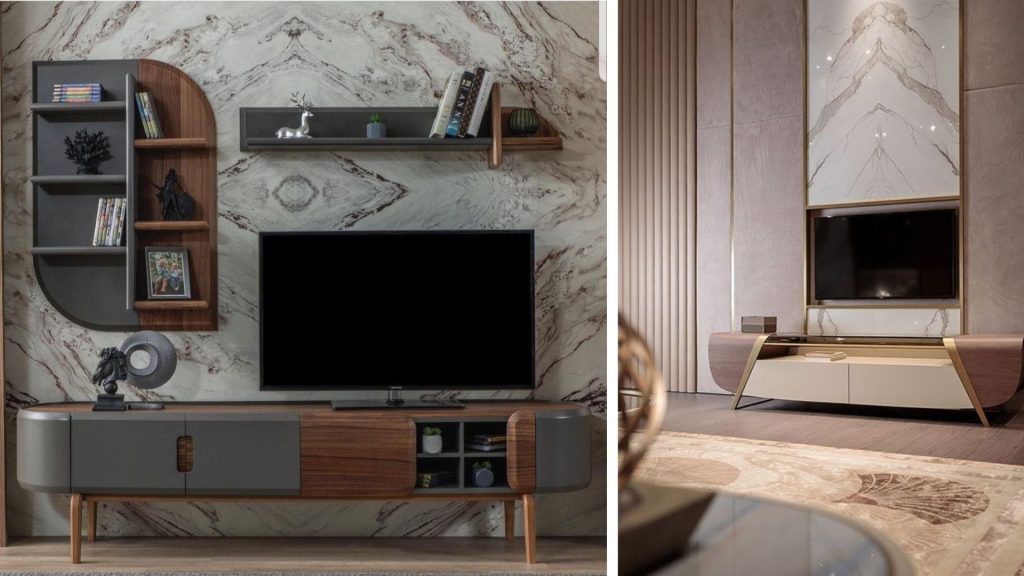
- Archetype of 1990s and Early 2000s Design: In the modern text, its scale is utterly disproportionate because it dominates a room’s architecture and creates an oppressive, heavy focal point. It represents a bygone era of technology and aesthetics, actively working against the principles of light, space, and current need.
- Opt for a Low-Slung Media Console: Select a console with a clean, horizontal profile. Its design should be recessive which acts as a stable base for the television. The best designs feature a combination of closed cabinetry (to discreetly house media components, routers, and games) and perhaps one open shelf for a single decorative object or essential speaker.
- Embrace Wall-Mounted Solutions: For the ultimate space-saving and minimalist aesthetic, you need to consider a wall-mounted panel or a series of floating shelves. This approach keeps the floor plane entirely clear, and induces the sense of spaciousness and facilitates easy cleaning.
2. Single-Task Furniture Units
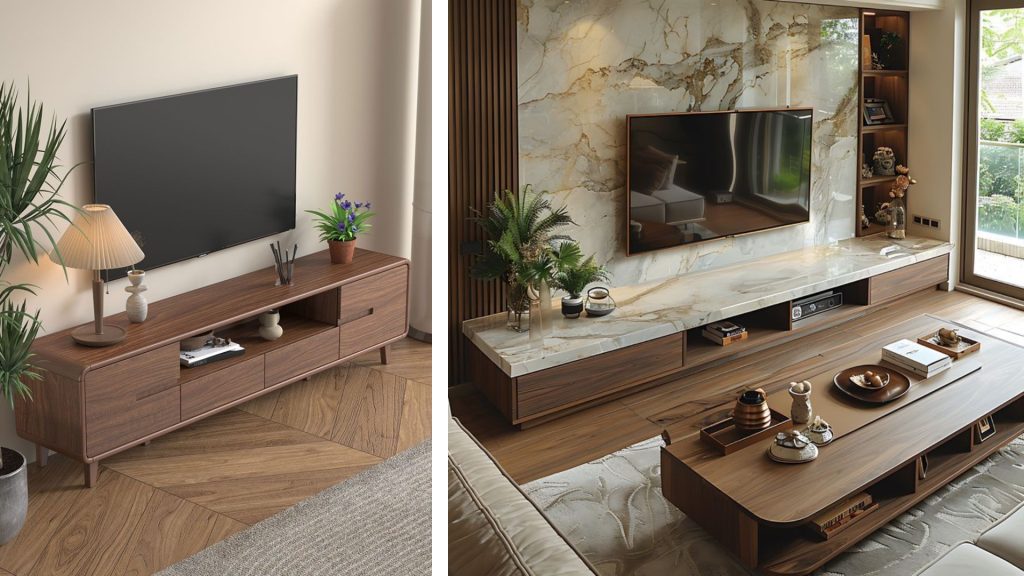
- Peak of Inefficient Design: These items are antithetical to the minimalist ethos. A unit designed to hold only a microwave, display only cupcakes, or store only magazines is a failure of multi-functionality. Because it consumes valuable floor space for a hyper-specialized task that occurs infrequently, spending the majority of its existence as a dormant dust-collector.
- Leverage Integrated Storage: The solution lies in consolidating functions. A microwave belongs on the kitchen counter or installed within cabinetry. Magazines, remote controls, and other small items should be housed within the drawers of a primary storage piece, such as a living room console or a side table.
- Repurpose Existing Surfaces: Serve cupcakes from a beautiful, multi-purpose platter that can also be used for other foods. Use a bookshelf you already own for display during events. The goal is to use what you have for wide-ranging uses, that ultimately eliminates the need for specialized, single-use furniture.
3. The Overly Ornate Accent Chair
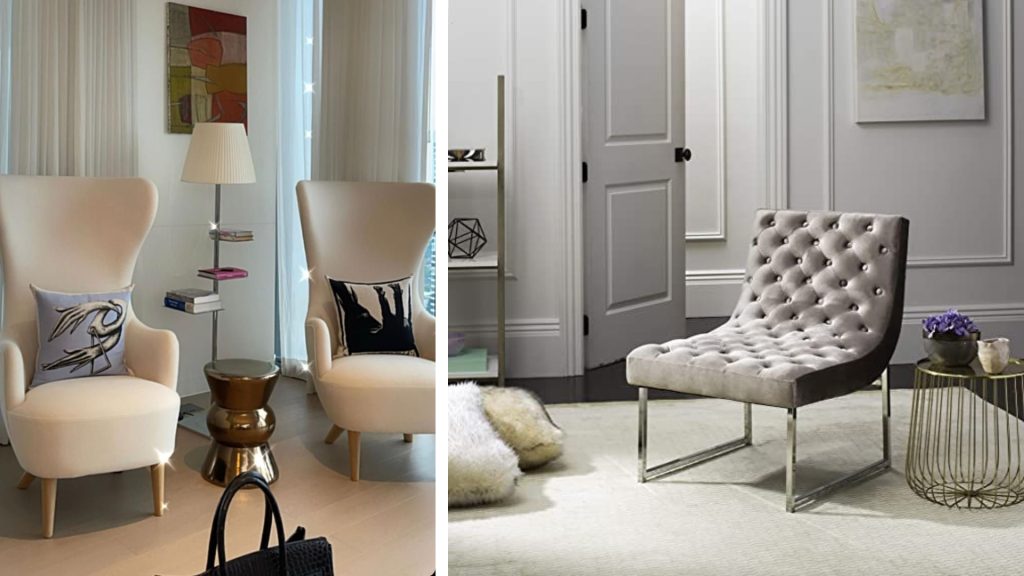
- Why It Must Be Avoided: Their intricate carvings, bold patterns, or unusual shapes quickly date a space and are difficult to harmonize. Practically, they are frequently too uncomfortable or awkwardly positioned for regular use, inevitably breaking down into a landing pad for clothing, bags, and other clutter, called the chair-drobe.
- Prioritize Purposeful Seating: If additional seating is a genuine need, invest in a well-designed, lightweight chair with a simple silhouette and neutral upholstery. It should be comfortable enough to be used daily and versatile enough to be moved where needed.
- Consider Non-Traditional Options: In casual living areas, a large, high-quality floor cushion or a fancy, sturdy ottoman can provide flexible, low-profile seating that can be easily tucked away when not in use, and this way it preserves the open feel of the room.
4. Decorative-Only Surfaces
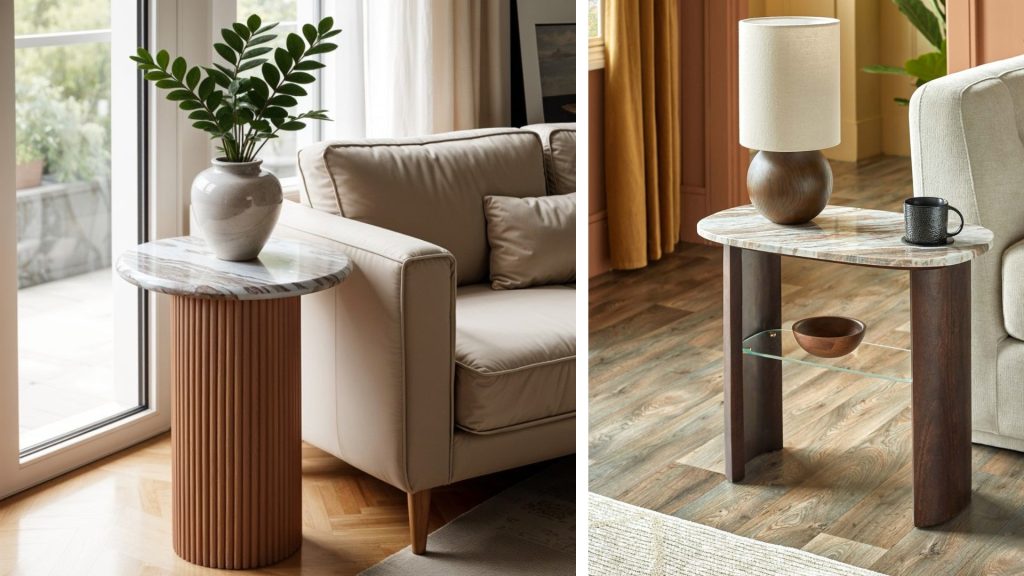
- Each furniture must have a reason for being: Small, wobbly accent tables, or narrow corner shelves installed without a clear purpose violate the principle of minimalism. Because they do not solve a storage problem nor support a frequent activity.
- Adopt the ‘Job Description’ Rule: Before introducing any surface, it’s better to define its essential function. Does it need to hold a lamp for reading? Provide a spot for a drink beside the sofa? If the answer is no, forego the piece entirely.
- Function-Driven Pieces: If a surface is needed, lock its design to justify by its use. A substantial side table with a drawer is valuable because it provides surface area and hidden storage. A sturdy console table behind a sofa can anchor lighting and display a single piece of art, and won’t appear frivolous.
5. The Massive, Matching Bedroom Set

- Relic of Decorator-Driven Past: Because it is clearly the enemy of personalization. These pre-packaged sets, regardless of its actual proportions, force a standardized oversized scale into a room. It ignores your specific storage requirements, often resulting in redundant or unused pieces.
- Curate a Collected, Personal Space: Select each bedroom piece individually based on an honest assessment of your needs and the room’s architecture. You may only require a bed frame with built-in storage. It eliminates the need for a large dresser. Perhaps one minimalist nightstand is sufficient, which can be paired with a slim wall-mounted sconce on the other side.
- Embrace Cohesive Eclecticism: Mixing materials and eras creates a layered, dynamic, and a customised space. It could be a modern platform bed with vintage-inspired nightstands. All you need to do is focus on a unifying element, such as a common wood tone, metal finish, or color palette, to yield a far more sophisticated and serene outcome.
How to Apply this Checklist?
Begin with a Clear-Eyed Assessment
Conduct a Rigorous Spatial Audit
Embrace Intentional Acquisition as a Permanent Practice
How Can Opalspace Help You?
The journey toward a minimalist furniture plan, as outlined, is about disciplined intention and reasonable selection. By following this minimalist furniture checklist, you can achieve a clean layout for your living space. Such a journey calls for a discerning eye that can distinguish between mere objects and meaningful additions. This is where our expertise becomes your greatest asset.
Opalspace was founded on the very principles detailed in this guide. Our role is to act as your strategic partner in curating an environment that is not simply furnished, but intelligently composed to reflect clarity, purpose, and profound comfort. We provide the structure and resources to move from idea to action. Our role is to translate your tastes into a functional layout and a shortlist of evergreen, purposeful pieces to make the journey a natural progression instead of a chore.

